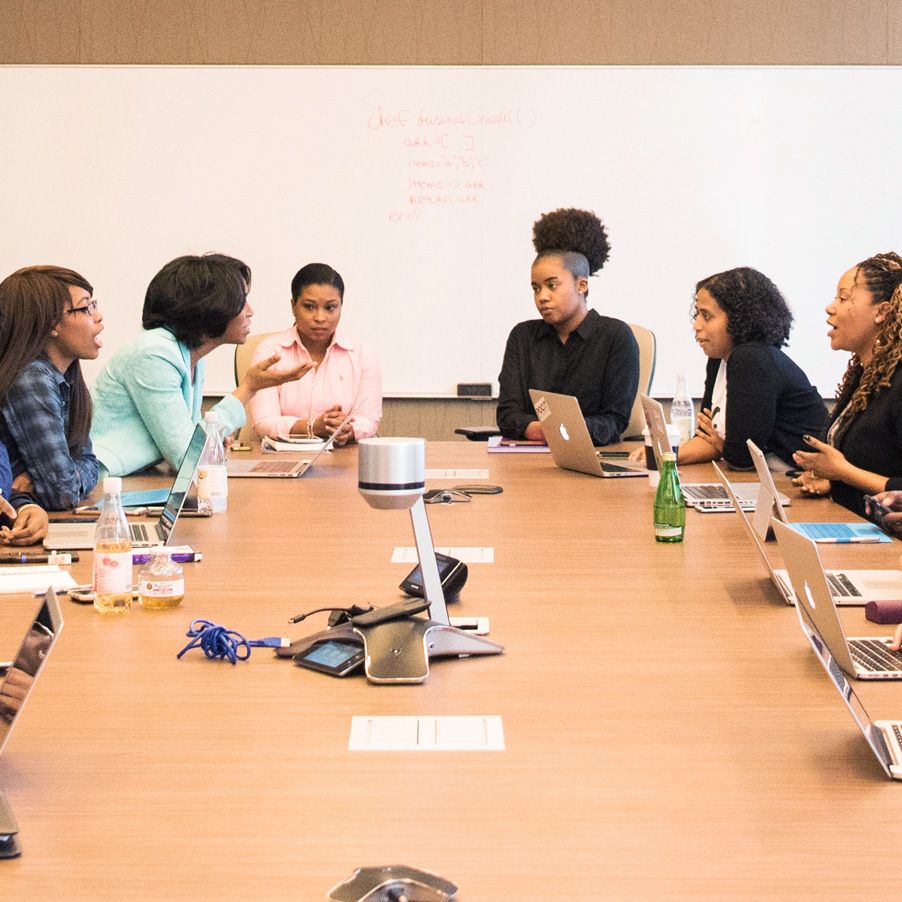Meetings have a bad rep. They have been known to be a huge time suck and have been considered ineffective or something that could have been replaced by an email. Many meetings are put together with the goal of sharing information. Meetings have a stronger purpose when they engage with others and create an opportunity for shared input. Whether this is for brainstorming, getting feedback, or working towards a decision.
In this article we want to share how to make a good meeting, from creating a productive agenda to effectively managing meetings. We’ll help you to consider when you should have a meeting, different tools you can bring to a meeting, and how to keep attendees engaged.
Understand the Goal of Your Meeting
Before scheduling a meeting, determine what is the goal? Are you trying to get help making a decision? Looking to brainstorm? Sharing a status update? Knowing what your goal is before the meeting will help you determine if a meeting is needed.
Consider Different Ways of Accomplishing Your Goal
Determine if the goal you have needs to be accomplished via a meeting. If your goal is to deliver a presentation of slides and get feedback, consider sending out the slides with a video beforehand and coming together to discuss feedback as a team and brainstorm ways to make it better.
Other times an email can suffice, especially if the main purpose is to share a status update.
Create a Meeting Agenda
Once you decide to go ahead with a meeting, make sure you craft a meeting agenda. An agenda should outline the goals of the meeting and the different items you want to cover. Agendas should be used at all meetings to keep everyone organized and ensure that the meeting is a productive use of time.
If you currently have ongoing meetings that don’t have a meeting agenda, a good way to impress your boss or client is to start implementing a meeting agenda in order to keep things more on track. You can use a task tracker to keep tabs on each item you'll want to make sure to discuss during the meeting.
When to Schedule a Meeting & Who to Invite
When you’re creating a meeting, consider when you want to schedule it and who should you invite. When scheduling, the best time for meetings is early to mid-week and in the mornings. Typically people are most engaged during this time, whereas at the end of the week energy may be low.
As for who to invite, be strategic. You don’t need to invite the whole organization, so determine who is truly necessary to accomplish your goals.
If you are inviting people on a different time zone, make sure you consider their needs. Having a 10am EST meeting would be 7am for those PST folks.
Other Meeting Considerations
Stick to Your Agenda
It’s easy to go off topic when you’re in a meeting. Make sure you stick to your agenda to keep things on time and ensure you accomplish the goals.
A tool to help with this is ‘tabling’. If a topic comes up that’s not on the agenda and doesn’t work towards the goals outlined, a simple strategy is to table the conversation for another time and communicate this to other meeting goers.
Start and Stop Your Meeting On Time
This one can be challenging to execute. It’s easy for people to be late to meetings or have them go over schedule. Try to avoid this whenever possible. Many people earlier in their careers can be timid to say, ‘we only have about five minutes left, let’s wrap it up with x, y, and z.’
Having control of your meeting and showing people that you’re respectful of their time is an important skill that translates across organizations and clients.
Engage & Be Inclusive
During the meeting make sure you’re engaging with all the participants in the meeting. You want to make sure they know that they were invited for a specific purpose and their input matters.
Be inclusive of different ideas and don’t shut anything down. Create a safe space for people to contribute.
Know Specific Next Steps by Meeting’s End
As the meeting comes to the end, make sure you know the action items from the meeting and next steps. Oftentimes different items come up in the meeting that need to be done afterwards - sharing new data, following up on a decision, asking a team member a question.
Before the meeting is over make sure everyone is aligned so you can follow up with a list designating the action item, who it is assigned to, and when it needs to be accomplished by.




